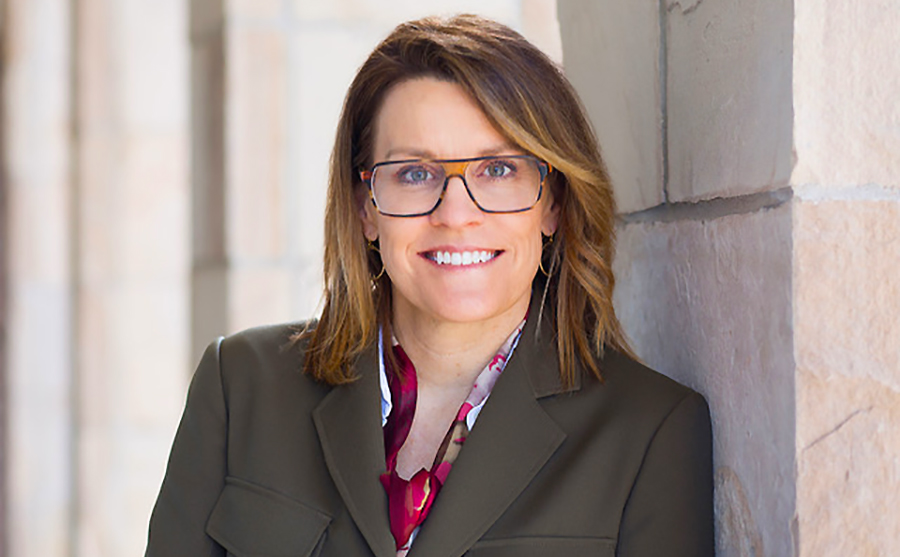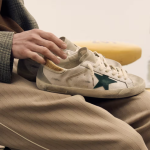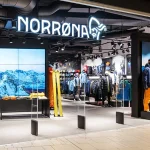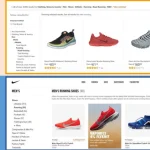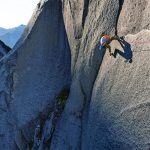By Eugene Buchanan
<span style="color: #a1a1a1;">New PeopleforBikes CEO Jenn Dice brings almost two decades of bike industry and advocacy experience to the trail, as well as a love of bicycling of all walks. Promoted after joining the organization in 2013 and more than a decade as a leader of IMBA, she’s an avid endurance rider, completing the Leadville Trail 100 race 14 times and hiking up and biking down Africa’s Mount Kilimanjaro twice. But inducted into the Mountain Bike Hall of Fame for her advocacy work, more importantly, she’s as strong a voice for public lands protection, conservation efforts and women’s initiatives as she is a rider. SGB Executive caught up with Dice to talk all things bike in one of the industry’s most prosperous — and participatory — years ever.
We’ve heard it’s been a banner year and that you’re growing? We have an $11 million budget, 28 employees and we’re bringing in a few more, which will give us about 32 people soaking wet. We’ve gotten two capacity grants recently that are tied to us increasing employees for certain initiatives. One will help our Better Bike Share Partnership; another one for our marketing and communications department; two to help businesses get their employees biking starting in Northwest Arkansas; and another as VP of our Business Network. The grants are for specific work we’re doing and to take advantage of the ripple effect of the bike boom we’re experiencing. We’re trying to leverage every aspect we can of the growth the industry is seeing for more and better biking.
Who are the grants from? Two recent grants are from the JPB Foundation and the Walton Family Foundation. The first helps expand bike share to underserved communities with a mission of equitable and replicable shared micro-mobility. The second grant is focusing on active transportation and inspiring employees of big and small businesses to bike to work, bike for short trips and for recreation. The grant is for Northwest Arkansas, but like the model, they are in so many ways, an incubator for entrepreneurial ideas. The goal is to create best practices around Bentonville and use those to get more corporate America biking. The Walton grant will create templates for other communities to follow.
How have you seen COVID-19 affect the bike industry? Have you ever seen such a surge before? The stats are unbelievable. It’s crazy. Since March, 10 percent of American adults reported riding a bike for the first time in a year or more; 22 percent have purchased a bike within the last six months; 27 percent are planning to purchase a bike within the year. Of our specific members, 85 percent said they introduced a new person to cycling during the pandemic, and 92 percent think it will stick for the new rider. The bike counters we track all over the country have seen marked growth. Rails to Trails counters are up an average of 81 percent since March, and Eco Counter (or counters in more urban areas) are up an average of 20 percent. We have even seen an average of 90 percent increase in some parts of the country. It’s phenomenal growth. People are turning to bicycles in droves — for short trips, family recreation, accessing essential services, avoiding crowded public transportation, getting out of the house, exercise, and more. We’re also witnessing momentum for bikes as an instrument of change.
COVID-19 has forced us to look at America’s climate, public health and physical activity crisis in entirely new ways. On the positive side, stay-at-home orders have fostered a renewed interest in walking and biking with 44 percent of our respondents reporting an increase in bike riding, and more than 50 percent have changed their commuting habits as a result of COVID-19. This change in behavior can build momentum toward permanently changing public health habits.
How is momentum coming along for your mobility and racial equality programming? We’re re-examining our work with our wide variety of partners with new mobility and racial justice lens to see how we’re doing and how we can do better. Bikes can play an important role in everything from climate change goals to resiliency planning to mobility justice. In June we shared our action plan to fight racial injustice, both within and outside the bike industry. We know that bikes won’t solve racism, but we can start with where we have the most influence. This work is not only the right thing to do, but is vital to the future of riding, the industry and bike advocacy. It connects to the very core of our mission — to make biking better for everyone. We can only all move forward when biking is made better for everyone.
We’ve initiated an audit to operationalize equity within our organization; issued an industry-wide survey to understand how we can best help the industry; completed a staff survey to benchmark and understand our strengths and weaknesses; are organizing a subcommittee dedicated to diversity, equity and inclusion within the bike industry; implemented new hiring guidelines to increase staff diversity; identified key areas for our research and data analysis programs to better support mobility justice; and reached out to potential partners who can help us better reflect all kinds of bicyclists riding all kinds of bikes.
What are some of the main bike issues at the Congressional level today? There is momentum in Congress to fund bike-related programs at a much higher level, better connect bike paths to complete bike networks, cut the red tape to access federal funding, and better link bikes as one part of a climate change solution. We’ve been working hard at the federal, state and local levels to increase funding and access for both recreational and transportation riding.
Our main job is to get Congress to write the “biggest check possible” to fund more bike projects. We’ve been laser-focused on the Transportation Bill, demonstrating the new demand for better and safer bike infrastructure. We’re also focused on climate change, making sure legislation includes bikes as part of the mix, as well as state and local recovery from the COVID crisis. We’ve seen some great indicators — but, most importantly, we need Congress to fund bike-related programs at a much higher level. Local government budgets are decimated and to keep active transportation front and center, the federal government needs to help even more.
How about at the state and local level? We’re working hard to support local ballot initiatives spearheaded by state and local advocacy groups – we call it VoteForBikes. So far this year we’ve helped secure $42 million at the ballot, with another $148 million coming this fall. We’ve seen some initiatives fall off this year because of COVID-19, but have had great success in others. For example, the city council in Austin, TX just put $460 million on the ballot for active transportation. People are realizing that bikes can be a smart solution to help improve urban mobility, air quality, traffic congestion, and mental and physical health. With careful, inclusive planning, cities can build connected, comfortable mobility networks that allow everyone to travel safely. They’re looking locally to seek healthy and safe ways to live, work and shop that will have sustaining effects on activity levels and our planet.
You created the PeopleForBikes Business Network when you first joined the organization in 2013…how’s that going? We set the bike industry up for success by telling its story and speaking with the voice of business. Our vision is a data and technology-driven, modern trade association. A year ago in July, we merged with the Bicycle Product Suppliers Association (BPSA), with whom we worked closely together in things like policy, trade and tariff issues and more. We’ve added more than 70 new members since the merger and are up to 280 supplier/brand members with more than 100 volunteer leaders helping move us forward. In May we also unveiled our Business Intelligence Hub, offering real-time data. It’s allowed better insights into participation numbers, retail sales and consumer trends. Our COVID-19 Resource Center is also full of helpful materials for bike businesses and to help keep new riders on their bikes.
What can people do to help? We’re working to make sure bikes are an essential and prominent part of rebuilding communities across America. Our goal is to insert bikes into federal, state local recovery initiatives. We want to keep the highest percentage possible of new and returning riders (including kids) on their bikes and need the industry’s help. People can write a simple letter to a local elected official thanking them for what they’ve done for bikes and asking them to keep the momentum going. Ask for protected bike lanes, open streets, bike parks, slower speed limits, and better-connected bike networks. We need better bike infrastructure in every community — let’s use this moment as a lever to go bigger for bikes. And companies and riders can join PeopleforBikes to be part of our campaign for more and better riding.
Mt Kilimanjaro twice, really? And any plans for a 15th Leadville? Nope, no more Kilimanjaro or Leadville, even though 15 has a nice ring to it. I got the memo that I might be able to do other things. My husband and I signed up for about six race events this year that got canceled; and there’s a cool race in Norway that I’d like to do next year. I did a three-day mountain bike stage race in Iceland last year, which was awesome. It went around a glacier and even though we were technically racing, we stopped to take pictures all the time. My team was there to have fun — we weren’t much of a threat to anyone.
Photo courtesy Jenn Dice

